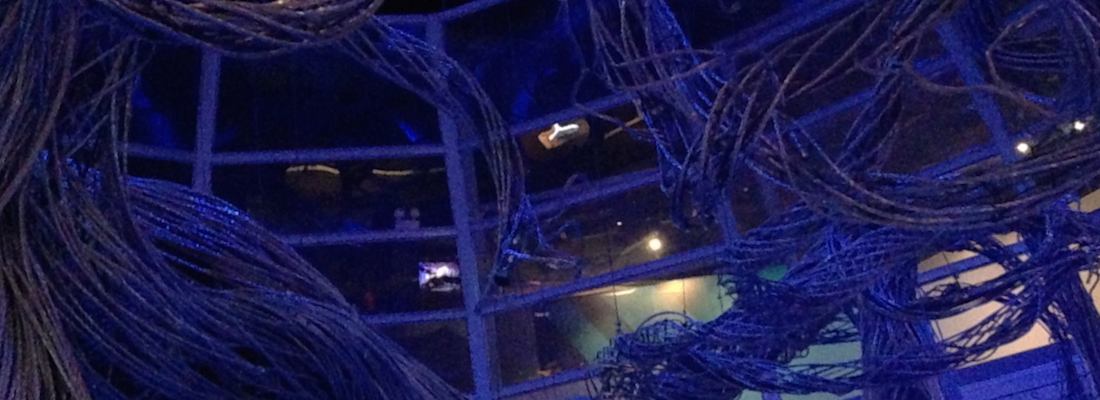

Some people call it Onionland. An encrypted part of the internet that allows people to browse with a reasonable amount of anonymity. The onion is a reference to layers of encryption. It is more commonly known, however, as TOR–from “The Onion Router”–or the Dark Net.
Jamie Bartlett’s spent time studying this Dark Net. In his recent book, he explores what people do under the conditions of anonymity on all sorts of fringes of the internet. Considering everything from internet trolling to anarcho-primitivists, via homemade pornography, neo-Nazis and pro-suicide forums, he readily admitted it was pretty difficult to research and write about at times. “They are sort of censorship-free,” Bartlett explained. “And as a result, there’s the good, the bad and the ugly all nestled in together.”
One possible theory of innovation is that even concepts like the Dark Net need as much freedom as possible to thrive. Bartlett said these communities, they “sort of stretch freedom to its limits.” So is innovation rife on the Dark Net? Yes and no, he answered. It’s certainly a hugely inventive place, but necessity is largely the mother of invention here with creativity often born of constraint.
Take, for example, drug marketplace the Silk Road. “It is a pretty hostile place for a market to exist,” Bartlett said, as the vendor system is constantly under attack by hackers or the FBI, and there’s almost no trust between users. Yet thousands of people still use the Silk Road as a functioning marketplace. Every time it shuts down, it just opens up again under a different guise.
Payment mechanisms are a particular challenge. “The problem on these sites is you are dealing in drugs and [the digital currency] Bitcoin,” he explained. “And drug dealers have a tendency to run off with your Bitcoin. So they’ve repeatedly evolved how the payment mechanism works.”
Try a simple exchange of Bitcoin, and dealers rip you off. Try holding currency on a third-party site until buyers have received their drugs and the site administrators scoop it up. So, Bartlett said, the Silk Road developed something called a multi-signature escrow system. “The site, the vendor, and the buyer create a wallet on the site and everyone has to use their encryption key to release it. It’s only when all three parties are satisfied that the deal’s been done that the money’s transferred. And in the event of anything failing, it goes back to the buyer.”
Bartlett continued, “What this has all been about has been to work out how on Earth do we create a payment system that is not at the whim of either a drug dealer or a site administrator. And over the course of 18 months, they’ve developed something that really works “¦ They’ve had to do it because they’re under attack all the time. But it’s an incredibly smart and relatively simple way around the problem.”
Another way to deal with lack of trust on the Silk Road has been user reviews. Bartlett said the quality of drugs is higher for this reason. “It’s introduced that element of competition and choice with user reviews, forcing vendors to act in the interest of the buyer, because they’ll get shit reviews if they don’t. And that completely changes the dynamic of the drugs market.” There are, predictably, also lots of people trying to manipulate the review system. But a community has grown up around the Silk Road to monitor reviews, some users there more out of belief in the idea of an anonymous marketplace than the drug business. People do this for more than money.
It reflects a larger challenge for these communities, Bartlett argued. “Anyone who is involved in crypto-anarchy has tried to merge an anonymous system–where no one needs to give away anything about themselves–with the system of trust that is essential for any functioning marketplace.” That’s hard. But the Silk Road’s faced that challenge by combining clever tech with complex social systems that keep trust operating and flowing within the community.
It’s not a cozy society they’ve created, though. There’s what Bartlett described as “a strange paranoia inside there, that everything’s tapped, everything’s being watched. And you just don’t know.”
It’s not just on the heavily encrypted TOR that we see such innovation born from challenge. “[These] sort of smart ways of taking technology to create solutions to problems is, I think, generally found in the fringes of internet subculture,” said Bartlett.
He offered the example of the far-right, radically anti-Islamic group the English Defence League. “In 2009, it was a group of young men from Luton, who didn’t have much experience of politics, or much money, but who saw that if they could use Facebook, they could quickly build a political movement at low cost.” In the space of about six months, Bartlett explained, the EDL had more Facebook likes than either of the leading U.K. political parties, adding that across Europe, the far right has been ahead of everyone else on Facebook, drawing on the power of social interactions, memes, and forms of gamification.
There are other reasons why EDL, et al., have the support they do, but social media has been key in letting them build. “We see the English Defence League and we imagine them as a group marching up and down the street,” echoing 20th century fascist movements, but Bartlett said that “95 percent of their action takes place online.”
He also spoke with compassion about pro-anorexia and pro-suicide sites, suggesting that they are, in a way, filling a gap left by traditional health services. “It’s peer-to-peer support networks that people, off their own back, have built and created,” he said. The people on these sites have formed a space online to talk to people like them, to feel less alone.” It becomes wrapped up in a social setting; it creates a vibrant community of people who look out for each other. That’s very powerful if you are feeling isolated and have low levels of self-esteem. There isn’t an alternative,” he said. There is a lot of destructive behavior here, Bartlett was keen to add, “but it’s still a very self-starting way of trying to resolve this problem. The lack of anywhere to go when you were feeling like that.”
Returning to the encrypted spaces of TOR, Bartlett explained that some people are driven simply by a desire to solve technological problems. Reflecting on Bitcoin developers, whom he’s spent time with, he said, “They’re obsessed with the idea of creating a perfect anonymous payment system that cannot be traced “¦ For many of these people it’s an exciting adventure. They’re desperately trying to crack this puzzle.”
He’s seen a fair bit of ideological zeal, too, with a basis in radical libertarianism. Developers hope anonymized payment systems could unravel the power of government. If you can’t monitor who is paying whom, you can’t tax people. If you can’t tax people, government falls pretty quickly.
One of the more intriguing bits of Bartlett’s book explores the Assassination Market, a sort of crowdsourced murder plot where people gamble on when someone is going to die. Anonymity is heavily plotted into the scheme, so there is a way of getting the money without anyone having to expose his or her identity.
Crucially, the pool of money can get so large there’s a high incentive to place a bet on a specific day, and then follow through with murder. “The idea of it was that no public official, bureaucrat, or politician would be brave enough to ever hold office, because they’d be too scared,” said Bartlett. It’s a sort of libertarian check on centralized power. “It’s so clever,” he said, with muted admiration. “But it’s all about seeing if you could murder someone “¦ I’m reading it thinking this is terrible, but it’s so damn clever.”
Open source plays a role here as well. This is partly ideological, as open source fits ideas of freedom common on TOR, be it a freedom rooted in libertarianism, anarchism, or something else. But users are also implementing it because it works. Drug dealers use open source software because it’s good for business–a way to cope in that hostile environment. Even ISIS is, sort of, into open source. Or at least, Bartlett explained, it took open source encryption software and made its own closed version of it.
“Open source code means more pairs of eyes checking it,” he said, referring back to the strange paranoia fueling a lot of TOR. “Are there any flaws in it, any exploits, any backdoors to allow third parties in, and the more open source it is, the more trust you can have in it “¦ I think more people have moved towards this model of open source software, partly because they realize that in a world where nobody understands the world fully, the more open it is, the safer it’s likely to be,” said Bartlett.
It’s a self-conscious approach to innovation. He added, “Many of them open-source stuff because they recognize that’s the way we’ll come up with brand new ways of doing stuff. They do this knowingly, they write the code in ways that allows others to build on top of it. Because they know there are going to be a million different applications for stuff that they haven’t yet thought of.”
And yet, finally, another layer of innovation comes from people watching the Dark Net. “Never underestimate how good the FBI or GCHQ is about getting into these places,” Bartlett grinned. Before the Snowden revelations, computer geeks could be condescending about intelligence services, he suggested, but that’s changing. “Both the internet itself and the TOR browser are inventions of the U.S. military, for intelligence-sharing purposes. So why in the world anyone thought these people would be so behind the curve is absurd to me.”


How We Get To Next was a magazine that explored the future of science, technology, and culture from 2014 to 2019. This article is part of our The Internet section, where we report on the past, present, and future of the information superhighway. Click the logo to read more.
